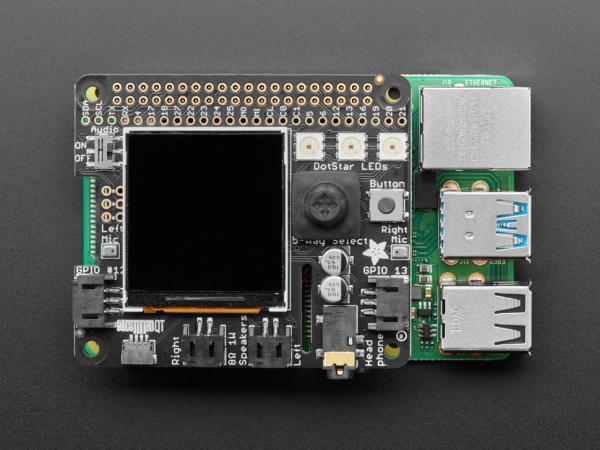Think about what would be useful when developing your machine learning projects for the Raspberry Pi, maybe a camera, a display, some input and output sound capabilities or even an easy means to easily inject the results of your algorithms into servo motors or other devices. Look no further, as the BrainCraft HAT gives you everything you need to kickstart your machine learning on the Raspberry Pi!

The BrainCraft HAT is Adafruit’s take on how you would like to make machine learning projects for the Raspberry Pi, making it easy for you on the development stage. Their inspiration came when they picked up some popular projects on TensorFlow and realized what would be handy to have in each of them. For example, in computer vision projects, how annoying it was not to have a visual representation of what is happening. There is also a slot for a camera, a joystick, buttons, microphones for your audio recognition projects (which can be mechanically powered off, something Alexa and other home assistants should take into consideration) and some extra connectors where you can easily plug relays, servo motors and other electronics, which is something you do not see a lot and extremely useful, bringing the gap between actuators and machine learning even closer. Lastly, as this is a HAT, you can still access you Raspberry Pi pins.
Regarding the specs:
- 240×240 1.54’’ IPS TFT display;
- Stereo speaker output (1W) + stereo headphone output;
- Stereo microphone input (with an On/Off switch that completely disables the audio codec);
- 2x 3-Pin JST STEMMA connectors on PWM pins + 1x STEMMA QT plug-and-play I2C port (can be used to connect objects such as heat sensitive cameras);
- 5-Way Joystick + Button for user interface and control;
- 3x RGB DotStar LED’s for colorful feedback;
- Controllable mini fan on the bottom to cool your Raspberry Pi.
The HAT’s performance is very acceptable, by looking at the introductory video on their website. They showcased an object identification project directly on the Raspberry Pi 4, packed with the TensorFlow Lite, while displaying video from the camera on the display and everything worked seamlessly. Interestingly, the performance only started to dip when the fan was turned off, typical of the Raspberry Pi 4.
Read more: ADAFRUIT BRAINCRAFT HAT – MACHINE LEARNING FOR RASPBERRY PI 4

